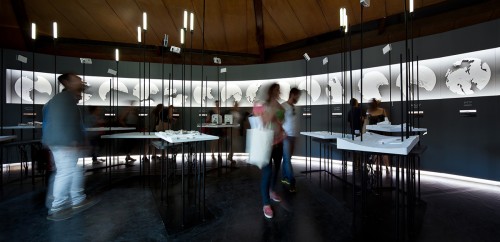
For the 14th International Architecture Exhibition at the Venice Biennale, Lateral Office curated the Canadian pavilion, Arctic Adaptations: Nunavut at 15. It has been recognized as one of the top pavilions at the event with a Special Mention for “its in-depth study of how modernity adapts to a unique climatic condition and a local minority culture.” Toronto-based Lateral Office is led by Waterloo Architecture professors Lola Sheppard and Matthew Spremulli, along with Mason White.
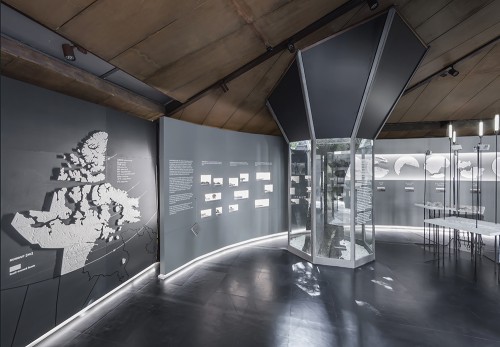
Embracing the Biennale theme Absorbing Modernity: 1914-2014, the exhibition examines the past, present, and future roles of architecture in the extreme climate and unique culture that define Nunavut, Canada’s youngest and northernmost territory. The territory offers much ground to cover: almost two million square kilometres, 25 communities, and 100 years of history. All to be displayed in one room.
“It almost seemed like a perfect synergy,” explained Sheppard about her response to the Biennale theme. “It seems that almost nowhere else has modernity been introduced and accelerated as dramatically as in the Canadian North.”
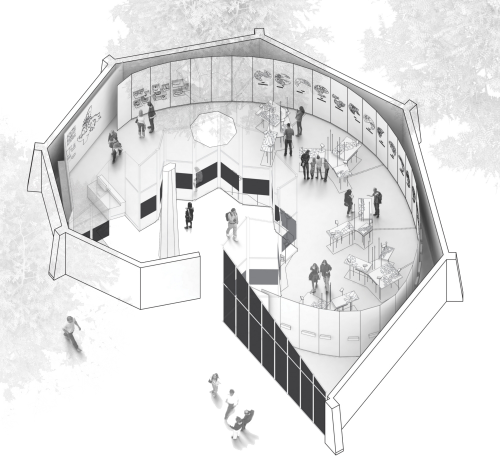
The exhibition space contains soapstone carvings of the territory’s significant works of architecture, topographic models and photographs of all 25 communities, and a series of architectural models.
The set of carvings looks at significant Nunavummiut architecture over the past 100 years, highlighting and documenting key historic and prototypical buildings. The representations were made by Inuit artists based on manufacturing drawings from Lateral Office.
The topographic models and photographs focus on the territory’s settlements in their current condition, detailing every river, road, and building. Spremulli, who played a major role in the exhibition’s physical representation and fabrication, said that the Nunavut settlement terrain maps “are 3D figure-ground maps of the Nunavut communities that all have quite similar infrastructural and growth pattern traits as Northern Canadian towns. One such trait is the fact that they are all coastal (for logistic purposes) and sit in relatively flatter terrain (for construction purposes), which negotiates between local topography and influences ‘urban’ growth.”
The final set of animated architectural models looks toward Nunavut’s future. The five projects were done in collaborations of five design teams composed of a Nunavut-based organization, a Canadian architecture school, and an architecture practice familiar with Canada’s North. They examine the roles of housing, recreation, health, education, and art.
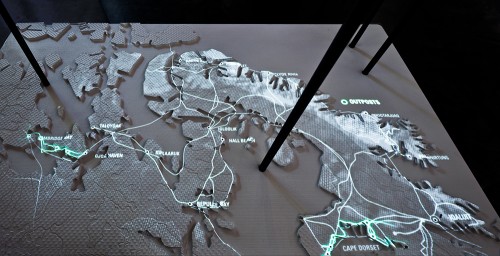
[BRIDGE] Did your interest in digital fabrication play a role in the exhibition’s development?
[Matthew Spremulli] I can say that my interests and a bit of a manufacturing background, which complimented my architectural background, played a quite large role in the materials, representation, and fabrication of the exhibition. We often were working quite quickly and needed to take advantage of both the speed and precision of digital manufacturing in order to give us the edge on coming up with iterations of content and infrastructure pieces we wanted and then being able to execute them for final assembly.What were the influencing factors in the materiality and representation of the exhibition?
[Matthew Spremulli] Different pieces were expressed in different materials. The final execution and the choice for these techniques was a play between what we wanted the piece to communicate and what could be technically done to create articulation and detail. Having an interest, background, and some experience with how shops work and how they work digitally assisted me in making informed suggestions about how something could be made or how it could be represented and what we could eventually achieve as a quality product, a product that would have to not only withstand the stresses of shipping, but multiple installs and dismounts.[BRIDGE] Where did your interest in the Canadian North spark from?
[Lola Sheppard] I hadn’t been to the North until about five years ago. We got interested in it through two routes: through architecture’s relationship to environment and geography. We have to think how architecture can work in an expanded territory with extreme climate and geography. In Nunavut, you have tiny communities and no roads, so the idea of building a network becomes an immediate question.What is it like working on projects the North?
[Lola Sheppard] We’ve been interested in the North since the first project we did there. There are no precedents and there hasn’t been much design thinking because Inuit people were still nomadic 50 years ago. We don’t know what urbanism in the North should be yet. The rules of engagement still need to be imagined. It’s both very daunting and liberating. It puts a pressure on design beginning with research. The only way that you can intelligently engage in that kind of context is by doing research to understand what exists and how to leverage spatial and cultures practices, or physical realities.How do you think modernity has affected Northern communities?
[Lola Sheppard] Architecture has largely been a tool of modernisation, sometimes for better and sometimes for worse. Modernity, as a cultural and an architectural enterprise, was introduced to many regions of the world fairy forcibly. In the North, geography, climate, and remoteness have pushed back at it.You have interesting hybrid conditions there. For example, you have youth who still go hunting on the land with their parents, but then go home and post about it on Facebook. There is an innovative young Inuit society that is very strategic and tactical about following traditions while tapping into the tools of modernity and globalisation.
What do you want visitors to take away from the Arctic Adaptations exhibition?
[Lola Sheppard] The exhibition has a few aims. It wants to bring, to both an international and Canadian public, an understanding of what the realities of living in northern Canada are. Many only know the National Geographic images of polar bears and glaciers, and there’s so rarely documentation of what communities look like. We also hope to argue for architecture as a kind of social and cultural agent. Architecture in the North has been one of expediency and efficiency. We want to put architecture back on the table as an important force in helping reinforce cultural identity.For more information about the exhibition, visit www.arcticadaptations.ca.
All images were provided by the Arctic Adaptations team. Photographs courtesy of Latreille Delage Photography and Sergio Pirrone.


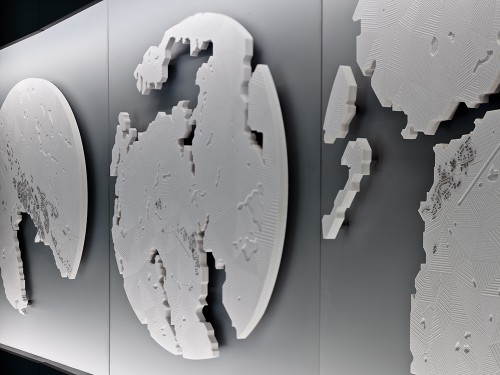
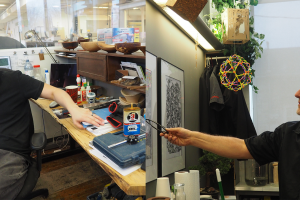
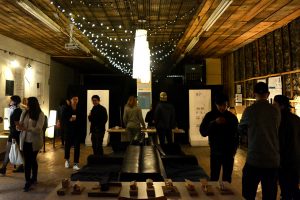
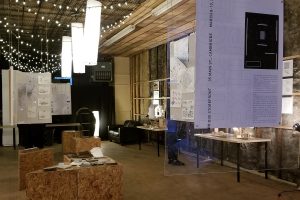
Leave a Reply